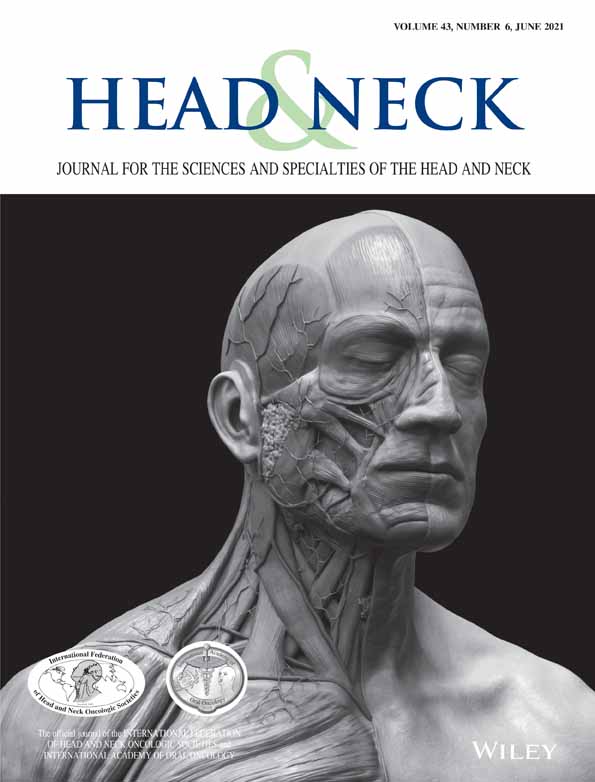The impact of COVID-19 on head and neck cancer diagnosis and disease extent
Ehab Y. Hanna, MD, Editor, was recused from consideration of this manuscript.
Section Editor: Dennis Kraus
Abstract
Background
Due to COVID-19, diagnostic delays and a surge of advanced head and neck cancer (HNC) is anticipated. We hereby evaluate patient and tumor characteristics before and during the early COVID-19 period.
Methods
Retrospective review of patients with HNC presented at a multidisciplinary tumor conference from May 14, 2020 to June 18, 2020 was performed and compared to a similar 6-week period a year before. Demographics, time to diagnosis, and tumor characteristics were analyzed.
Results
There was a 25% reduction in newly diagnosed malignancies. Groups were similar in baseline characteristics, duration of symptoms, and time to diagnosis. However, median primary tumor size was significantly larger (p = 0.042) and T stage more advanced for mucosal subsites (p = 0.025) in the COVID-19 group.
Conclusion
Our findings suggest increased tumor burden in patients with HNC presenting during the pandemic, despite a similar time to diagnosis. This may become more pronounced as the pandemic duration is extended.
Open Research
DATA AVAILABILITY STATEMENT
The data that support the findings of this study are available from the corresponding author upon reasonable request.




